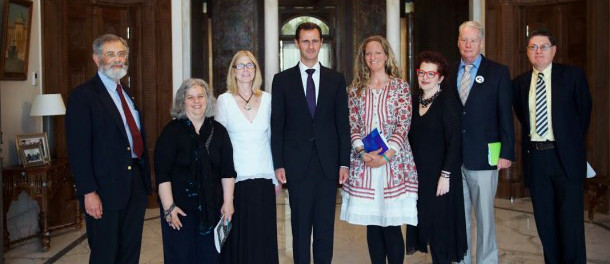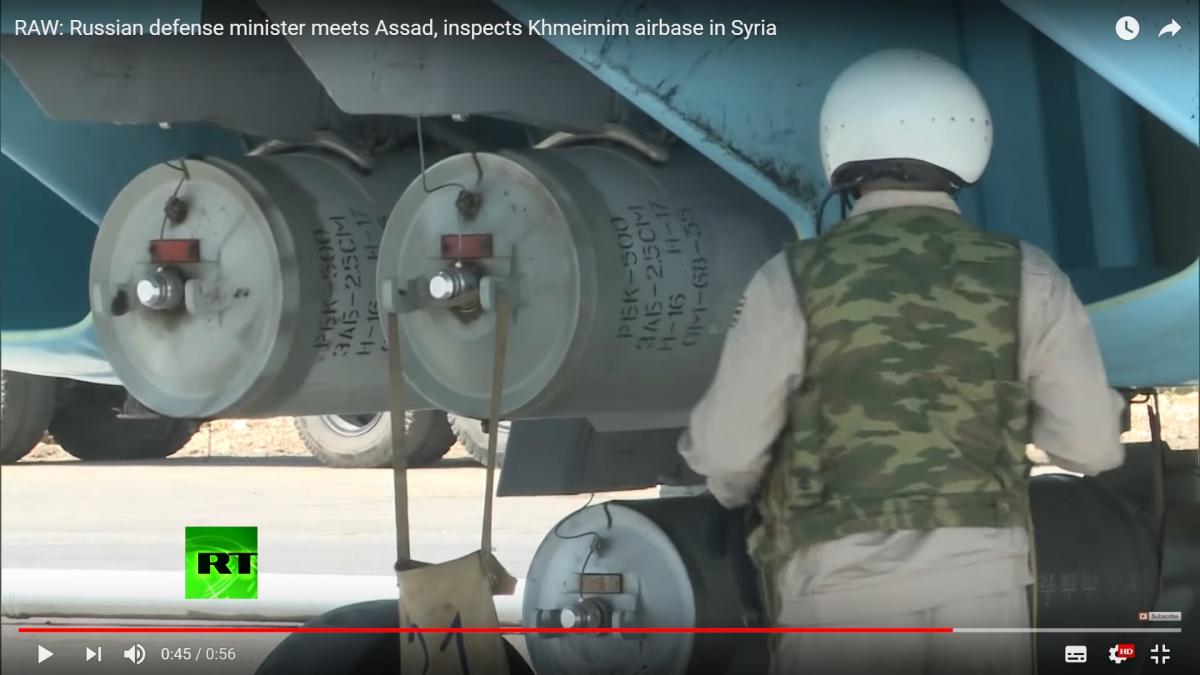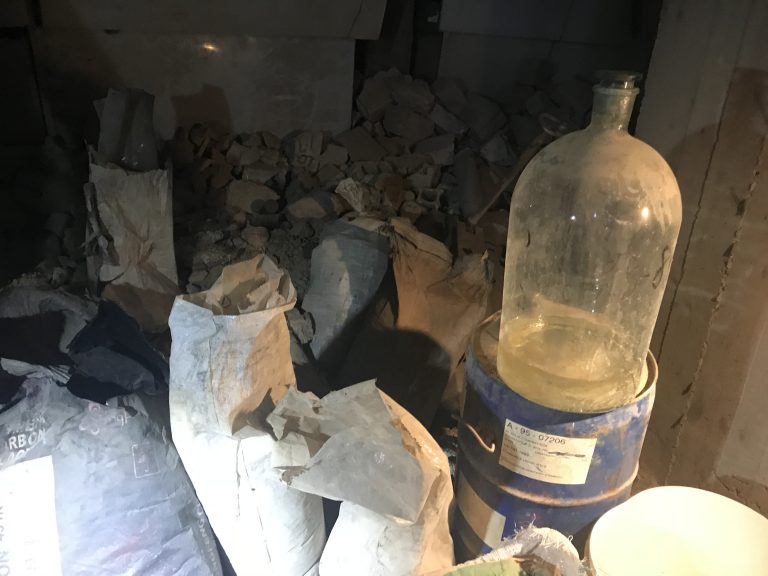
One spin-off from the Syrian conflict has been a war of words that reaches far beyond the Middle East. It’s a battle in which honest reporting and the search for truth have come under sustained attack.
Those leading the attack claim they are simply asking questions that need to be asked. It’s healthy scepticism, they say. But it’s a selective kind of scepticism where reports from some sources, primarily mainstream media in the west, are dismissed as untrue — not because evidence shows they are wrong but because they don’t fit the desired narrative.
At the same time, reports that do fit the narrative win praise on social media, regardless of supporting evidence, and people who venture to question them are liable to be assailed with abuse.
A prominent example is the work of Vanessa Beeley, a supporter of the Assad regime whose reports from Syria have turned her into a social media celebrity. The Russian propaganda channel, RT, describes her as “an independent investigative journalist” and, in addition to her Russian TV appearances, she is associate editor of 21st Century Wire, the conspiracy theory website that publishes most of her work.

To her admirers on social media Beeley is almost a goddess and criticising her work is little short of blasphemy. She’s on the ground “putting the truth out there”, they say. She’s a brilliant reporter and a “real journalist”. She deserves a Pulitzer and possibly a Nobel Peace Prize too. Those singing her praises range from Katie Hopkins, the right-wing columnist and broadcaster, to Tim Hayward, a university professor who has “great respect” for her.
The truth, though, is that her reports from Syria are basically crap. To see why, let’s look in detail at one of her recent articles — a long one published by 21st Century Wire on April 8 and headed: “SYRIA: The Egregious Western Media ‘Chemical Weapon’ Fraud in Eastern Ghouta”.
Incendiary weapons
Confusingly in view of the title, the article starts by discussing napalm. Napalm is not classed as a chemical weapon — it’s an incendiary weapon with horrible effects — and its use is restricted by the international Convention on Certain Conventional Weapons.
Beeley explains that napalm was an American invention and describes its historical use in various wars around the world. She complains that the US took almost 30 years to get around to signing the convention but seems not to have noticed that Syria still hasn’t signed.
She also quotes a book by Robert Neer:
“Countries that have used napalm, in addition to the United States, include: Greece (the first use after World War II), France, Britain, Portugal, United Nations forces in Korea, the Philippines, South Vietnam and North Vietnam (in flamethrowers), Cuba, Peru, Bolivia, Israel, Egypt, Turkey, India, Iraq, Nigeria, and Brazil.”
“Syria is not mentioned,” Beeley announces, as if this somehow demonstrates the regime’s innocence. It doesn’t, of course. The word “include” in the paragraph quoted from the book makes clear it is not an exhaustive list.
Last week, in response to an enquiry by email, author Robert Neer explained why Syria was omitted. He completed the book in mid-2012 and had only listed the countries he knew about at the time (the first reported use of air-launched incendiary weapons in Syria came in November 2012 — too late for inclusion).
He also pointed out that there are other types of incendiary weapons besides napalm, so it’s not always clear whether napalm itself has been used or another weapon that has similar effects.
The White Helmets: a ‘propaganda construct’
The reason for Beeley’s discussion of napalm appears to be a tweet posted by the White Helmets organisation in March saying that 37 civilians had been killed by a napalm attack in Eastern Ghouta.
An image of the tweet is reproduced at the top of Beeley’s article with a caption saying the White Helmets are a “propaganda construct” created by Britain and the US, and that the tweet was one of their “many unsubstantiated claims”.

Setting aside the White Helmets’ claim about Eastern Ghouta, and the question of whether napalm itself or a napalm-like substance may have been used, there have been many other attacks in Syria with incendiary weapons. By September 2013, Human Rights Watch had already counted 56 of them.
There’s no sensible reason for disputing the use of these weapons, because Russia has already provided confirmation. In 2016 its RT channel broadcast a report about the Russian defence minister inspecting Khmeimim airbase in Syria. Its footage (here at 0.45) inadvertently showed a warplane fitted with incendiary bombs.
Accusations of fakery
Undiscouraged by that, though, Beeley proceeds to accuse the BBC of faking evidence of an incendiary attack. In August 2013 a BBC crew were filming at a hospital in northern Syria (outside the regime’s control) when ambulances started arriving with youngsters suffering from burns — a school was said to have been hit by an incendiary bomb. The resulting footage, which is horrific, can be seen here (starting at 30:40).
The burns are obvious from the film but for Beeley it’s all part of a media conspiracy. “Independent journalist, Robert Stuart, has masterfully and forensically exposed this report to be nothing more than war theatre orchestrated by the BBC,” she writes.
In the face of such suffering it’s a vile claim to make, but Beeley persists. She would have us believe the BBC faked the scenes “in order ratchet up UK military intervention in Syria, coinciding with the time of [British prime minister] David Cameron’s vote in parliament to join the US bombing campaign in Syria”.
In saying this she regurgitates a popular conspiracy theory that the BBC timed the broadcasting of its footage in order to influence the parliamentary debate taking place on the same day.
A closer look, though, shows it isn’t true. The BBC’s first report of the atrocity was broadcast on the 10pm news. At that point the debate — in which parliament rejected military action — was already over and MPs were in the process of voting, without access to televisions as they did so.
The BBC later said its footage had arrived from Syria at 9.30pm and had been broadcast at the first opportunity. More of it was shown in a Panorama documentary a month later.
Ignoring the chemical weapons investigators
Eventually Beeley’s article arrives at the topic in its headline: the chemical weapon “fraud” (or, with the quote marks in the position favoured by her headline writer, the “chemical weapon” fraud).
The BBC report, she writes, “came hot on the heels of the alleged chemical weapon attack in Eastern Ghouta in August 2013 which was immediately blamed upon the Syrian government. Since then, that claim has been discredited by a number of analysts and independent experts.”
Beeley persists in calling it an “alleged” attack although there are no longer any reasonable grounds for doubt. Laboratory tests on samples obtained by investigators from the Organisation for the Prohibition of Chemical Weapons (OPCW) established that the nerve agent sarin had been used. Moreover, the sarin in question had a chemical signature linking it to the regime’s stockpile.
One of the extraordinary things about Beeley’s article is that in discussing chemical weapons it makes no mention at all of the OPCW’s investigations. The reports by the OPCW’s fact-finding mission — all 18 of them — are the most detailed source available of information about chemical weapons use in Syria.
Deaths in a tunnel
Beeley’s scepticism about chemical attacks attributed to the regime is matched by her lack of it where allegations of chemical attacks by rebels are concerned. She writes:
“We know that terrorist chemical weapon attacks against the civilian population in West Aleppo were never given equivalent importance by the same ‘humanitarian’ minded nations, in fact they were largely ignored.”
In support of this claim she links to another of her reports, in March this year, which talks about “an unidentified gas attack” in the Old City of Aleppo in August 2016. On that occasion, she says, three members of the Syrian government’s civil defence team and 20 government soldiers lost their lives.
“I was able to talk to two surviving crew members who pieced together the events of that day. They told me that the terrorists had been tunneling to reach SAA positions in the Old City and that SAA special forces had discovered the tunnels and had entered them to confront the terrorists or to destroy the tunnels.
“It was hard to put the fragments of memory together into a coherent narrative but what the two crew members described was horrific.”
She goes on to say:
“Both men were clearly still struggling with their memory of that day in August 2016 but piecing together what they could remember and combined with the lasting physical side effects, there seems no doubt that a CW [chemical weapon] of some kind was used against them.
“Why was it never reported by Western media nor listed as a war crime by the UN organisations that are mandated to document such crimes?”
That’s presumably a rhetorical question, because with some simple checking Beeley could easily have found the answer. At the request of the Syrian government the events in the tunnel were thoroughly investigated by the OPCW which produced a 30-page report and said in its conclusions:
“Based on the evidence presented by the National Authority of the Syrian Arab Republic, the medical records that were reviewed, the results of the sample analyses, and the prevailing narrative of all of the interviews, the FFM cannot confidently determine whether or not a specific chemical was used as a weapon in the investigated incident.
“From the results of the analyses of the samples, the FFM is of the opinion that none of the chemicals identified are likely to be the cause of death of the casualties in the reported incident.”
Despite that, based on “fragments of memory” from the two men she spoke to, Beeley is in no doubt that a chemical weapon was used.
Chemical weapons — or just chemicals?
During the Syrian conflict there have been reports from time to time of chemicals being captured from rebels. The regime and its supporters generally present these discoveries as evidence of chemical weapons production even if the chemicals are everyday substances used by civilians.
Two recent chemical discoveries are described in Beeley’s article. She writes:
“Journalist and geopolitical analyst, Sharmine Narwani, was in liberated Eastern Ghouta a few weeks ago when a Chemical Weapons laboratory was discovered in the farmlands …”
In Beeley’s account there is nothing “alleged” about this; a chemical weapons laboratory is what it is. Follow the link to Narwani’s report (on the RT website), though, and the picture looks less certain: the headline speaks only of a “chemical lab”. In her report Narwani describes what she saw:
“Upper rooms packed with electronic hardware, basements outfitted with large boilers, shelves filled with chemical substances, corners heaving with blue and black canisters (reportedly containing chlorine), chemistry charts, books, beakers, vials, test tubes and all the paraphernalia familiar to the average student of science. And then, in several corners, piles of pipe-shaped projectiles — clear munitions of some sort.”
There was also a boiler and some kind of compressor. At the mention of chlorine (a common substance with multiple civilian uses), Narwani notes that it “has repeatedly been used in small quantities on the Syrian battlefield”. For battlefield use, though, rebels would need chlorine gas. If the blue and black plastic containers shown in Narwani’s photo did contain chlorine it would be in liquid form, since they were clearly not pressure vessels.
To her credit, Narwani remains ambivalent about the discovery. “Is this a chemical weapons lab?” she asks … “Or simply a chemical lab manufacturing a substance used in warfare — like explosives?”
For no obvious reason, Beeley, on the other hand, is sure it’s a chemical weapons lab.
Beeley’s discovery

Beeley also describes a visit she made herself to a rebel “chemical weapons facility” in Eastern Ghouta on April 6 in the company of government forces. “I am grateful that they care enough about our safety to be with us on these trips and to provide answers to any questions we have,” she writes.
Her article includes a series of photos of what she claims were “chemical weapon ingredients” — though it’s clear from the article that she hadn’t a clue what most of them were.
“Some of the bags containing the chemical ingredients were still booby trapped and therefore it was not possible to pick them up to show the labels more clearly. It was also very dark but I did my best to photograph everything I saw there.
“There were a number of sacks and barrels of ingredients, not all were easy to identify by the brand name on the bags and we were told that the terrorists had rebagged some of the ingredients. One of the bags contained the chemical compound RDX.”
Based on what Beeley saw, it’s hard to imagine how this could be justifiably described as a “chemical weapons facility”. The only “chemical” she seems sure of is RDX which has nothing to do with chemical weapons: it’s a common type of explosive.
But that’s what the game is about. For allegations against the rebels, Beeley’s threshhold of proof is so low that it’s almost non-existent. For allegations against the regime it’s so high that it may never be reached.

 RSS Feed
RSS Feed
